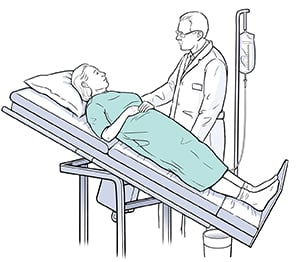 Urodynamics (UDS) testing is a critical tool for the urologist managing voiding dysfunction and incontinence.
Urodynamics (UDS) testing is a critical tool for the urologist managing voiding dysfunction and incontinence.
Like all tests, there are certain scenarios where the results are more helpful than others and times when using a test is critical.
This blog posts explores several key situations when UDS is a critical test to consider.
- Evaluating a patient with neurogenic voiding dysfunction:
UDS plays a key role in the management of patients with neurogenic voiding dysfunction, regardless of etiology. They are helpful for assessing upper tract risk from a poorly compliant bladder; when a change in continence occurs in such patients; when planning intervention or following up on an intervention; and for both baseline and routine follow-up. This is one of the key places UDS plays a role and is a key patient in whom UDS is appropriate.
- Before TURP in patients with urinary retention:
Perhaps the best patient pre-TURP to perform UDS on is the man in urinary retention, whether managed with intermittent catheterization or an indwelling foley/SP tube. UDS is much less of a commitment than proceeding with a TURP to test if a man can void and may be the only means of sorting this out if he has failed multiple voiding trials, before surgery. Performing a TURP, only to learn the bladder does not work and long-term intermittent catheterization is the treatment the patient needs is frustrating for everyone involved. UDS can prevent this from happening and this is a great patient to perform UDS on.
- Before placing a sling in a woman with mixed incontinence:
UDS can be very helpful in the patient with a mix of urge and stress leakage, before placing a sling. Clearly placing a sling and obstructing voiding in many women will worsen a challenging situation. Likewise, UDS can help assess the degree of overactivity and Valsalva leak point, so appropriate therapy can be provided in this patient population.
- After placing a sling when new onset urgency leakage is present:
A follow-on to patient 4, a woman with new onset urge after a sling is placed may be obstructed and need a urethrolysis. UDS is a key test to sorting this out and offering potentially corrective therapy to these women.
- The patient who cannot adequately explain his or her symptoms:
Sometimes these are cases where the doctor just can’t ask the right question; other times, the patient can’t explain things adequately. Regardless, failing to communicate effectively, especially if surgery is being contemplated, is a major issue. You may choose the wrong therapy, the patient may be unhappy or worse, and the patient may not improve. UDS is a great way to figure out objectively what is happening when the history and subjective assessment just aren’t helpful.


